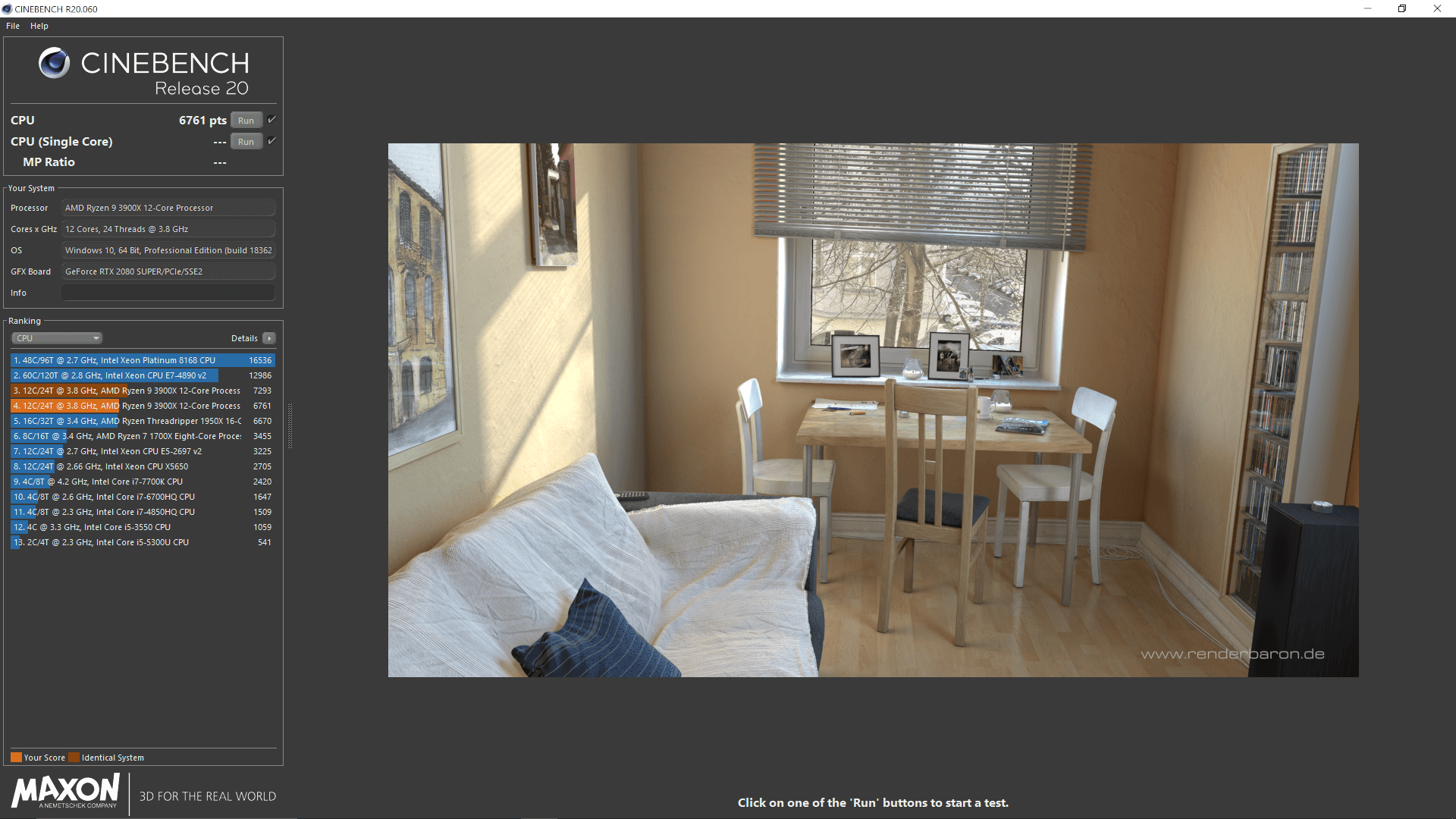One of the features introduced with the 3rd Gen Ryzen processors was Eco Mode. In AMD’s own words, it cuts down the power consumption of the processor significantly without affecting real-world performance by much. We’ll be verifying that by testing the impact of Eco Mode on the 12 core Ryzen 9 3900X in terms of performance and power. We’ll be testing a bunch of popular games, followed by the trusty Cinebench R20 benchmark. We’ve already tested Eco Mode on the Ryzen 7 3700X, you can read that here. In general, it’s best suited for higher-end processors such as the 3900X and 3950X which have 12-16 cores. The higher the core count, the better the more pronounced the impact.
Test Bed
- CPU: AMD Ryzen 9 3900X
- Cooler: NZXT Kraken X73
- GPU: NVIDIA GeForce RTX 2080 Super
- Memory: Trident Z Royal 8GB x 2 @ 3733MHz
- PSU: Corsair HX1000i
AMD Ryzen 3900X Eco Mode: Gaming Performance



One thing’s for certain. In gaming workloads, Eco Mode has a very limited effect. Even the most CPU intensive titles like Assassins’ Creed Origins which chokes on older chips ran fluidly, although, the frame rates were just a tad bit lower in Eco Mode. Deus Ex performed the same both in terms of averages as well as the lows. Far Cry 5, on the other hand, strangely saw slightly better performance with Eco Mode enabled.
Let’s have a look at the clock scaling:


In most games, the single-core boost clock is higher when switching to Eco Mode. The lowest frequency drops are slightly more pronounced but overall, the single, dual and quad-core boost clocks are notably higher than stock. This explains why some games (like Far Cry 5) see a small boost in performance when using Eco Mode. Assassins’ Creed which leverages all the CPU cores is adversely affected as it doesn’t benefit from higher clocks as much and prefers a higher all-core clock.
AMD Ryzen Precision Boost 2 vs Precision Boost Overdrive vs AutoOC: What’s the Difference?
Most games only utilize up to 4-6 cores to the fullest and in Eco Mode the power consumption drops, allowing those half dozen cores to boost slightly higher, thereby resulting in better frame rates. We know that Precision Boost 2 is quite sensitive to the power draw and temperature and this further proves it. You can read more about it above.
AMD Ryzen 3900X Eco Mode: Content Creation and Cinebench R20


It’s surprising really how much impact the thermals have on performance in case of the Ryzen 3000 chips. Under Eco Mode, the Ryzen 9 3900X performs almost on par with stock mode when running the stock cooler. A good AIO Cooler like the Kraken X73 can do wonders with these CPUs. Let’s have a look at the clock scaling now:

In the Cinebench R20 multi-threaded test, the operating clocks drop from 4,150MHz to 3,925MHz (average). That’s a lofty 225MHz drop, explaining the resulting Cinebench scores. The clocks are much more stable in stock mode while in Eco Mode, they drop to 3900MHz for a significant portion of the benchmark.

AMD Ryzen 3000 Boost Fix: Testing 1usmus Boost Fix vs Official AGESA Update
Power Consumption
Now, the power consumption is the most important part of this test. In the previous post, we considered only the CPU package power which can be misleading in certain scenarios. Take gaming for example. Modern games rely much more on the GPU compared to the CPU, and as such the former often draws 2-3x more power than the latter. Have a look:

Cinebench R20 behaves as expected: The system power draw drops by a healthy 65W in Eco Mode. This is the total system power draw, measured at the outlet, mind you.

Now, have a look at the power consumption profile when running Assassins’ Creed Origins. Unlike Cinebench, the system power draw varied drastically from scene to scene jumping from 200W to 350W in a matter of seconds. And as you can see, Eco Mode has almost no effect on the total system power draw here. While the CPU does draw around 10-15W less with Eco Mode, the GPU power consumption actually increases by a bit.
Furthermore, when using Eco Mode, spikes to 350-360W were a lot more frequent compared to stock. Under stock conditions, the TDP mostly stayed in the 344 to 348W range. In Eco Mode, however, while the average was 342W, the peak power draw was 10-15W higher, with more frequent spikes to 350-360W.
- Intel vs AMD Processor Comparison: Difference Between the Ryzen and Core CPU Architectures Explained

 Intel 15th Gen Core i5-15400F (Core Ultra 5 240F) Specs Leak Out: 20A Chips in 2025?
Intel 15th Gen Core i5-15400F (Core Ultra 5 240F) Specs Leak Out: 20A Chips in 2025? 13th Gen i9-13900K is ~30% Slower at Intel Spec than Board Partner “Optimized” Power Limits
13th Gen i9-13900K is ~30% Slower at Intel Spec than Board Partner “Optimized” Power Limits AMD Ryzen 9000 “Strix Point” CPU: Nearly As Fast as Intel’s Core Ultra “Meteor Lake” at 1.4 GHz
AMD Ryzen 9000 “Strix Point” CPU: Nearly As Fast as Intel’s Core Ultra “Meteor Lake” at 1.4 GHz ASUS X670/B650/A620 Motherboards are Ready for AMD’s Ryzen 9000 “Zen 5” CPUs
ASUS X670/B650/A620 Motherboards are Ready for AMD’s Ryzen 9000 “Zen 5” CPUs